Shrimp in coconut sauce (Encocado de camaron)
This is my easy to make recipe for shrimp in coconut sauce, also known as encocado de camaron in Spanish. This delicious Ecuadorian coastal dish is prepared with shrimp, onion, , garlic, achiote (annatto), bell pepper, tomato, cilantro and/or chillangua, coconut milk, lime juice and other condiments. Shrimp encocado, or “encocao” for short, is typically served with rice – perfect to soak up that creamy sauce -, patacones or green fried plantains, slices of avocado, and lime.
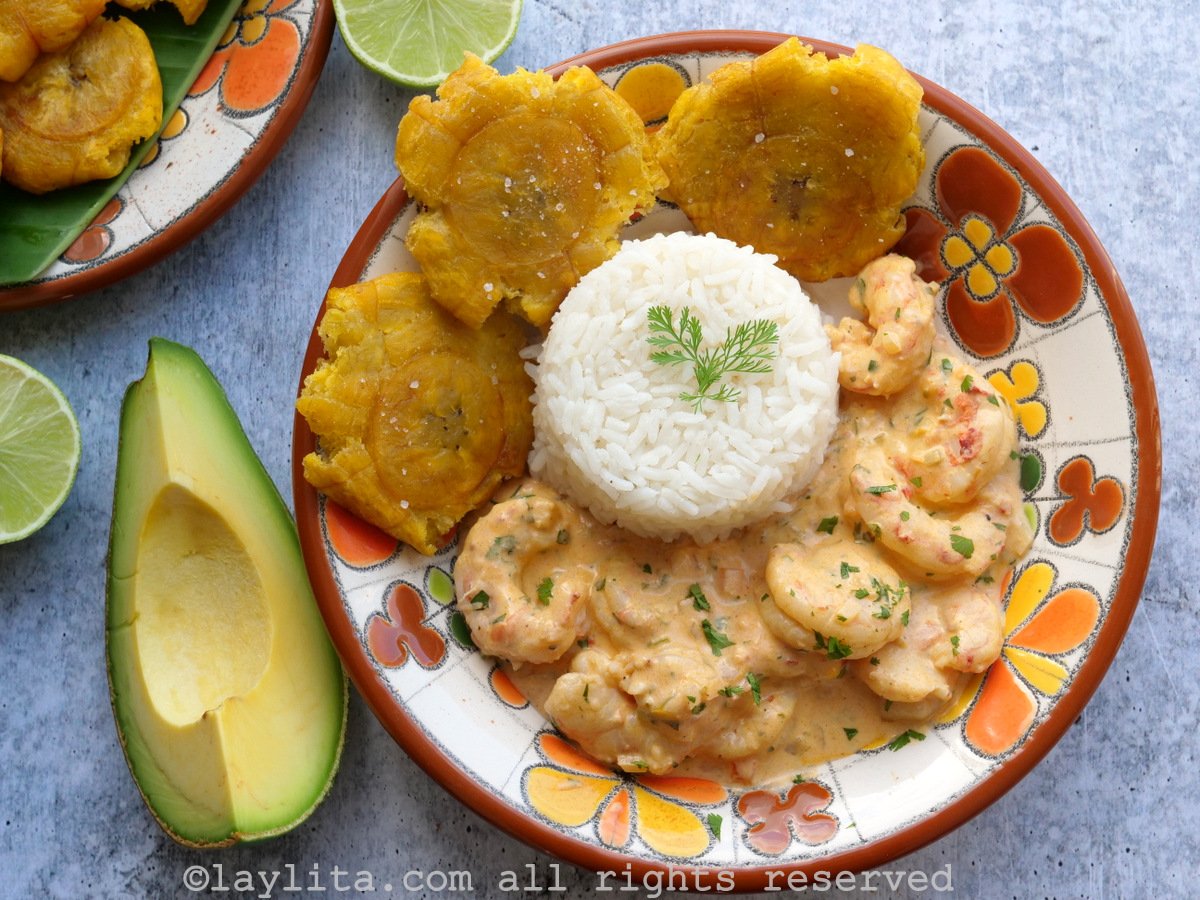
Variations of encocado in Ecuador and Latin America
There are different variations of Ecuadorian encocados, the most popular one is the pescado encocado or fish in coconut sauce. At many of the beach towns you can find fresh fish and a variety of seafood, or a mix of both, cooked in this tasty coconut sauce. Another version for those who don’t like seafood is prepared using chicken.

These days you can find this shrimp in coconut sauce on the menu at most restaurants in Ecuador that serve traditional dishes. However, the best place to eat it is on the beach. The province of Esmeraldas in the northern coast of Ecuador is especially known for preparing the best encocados.
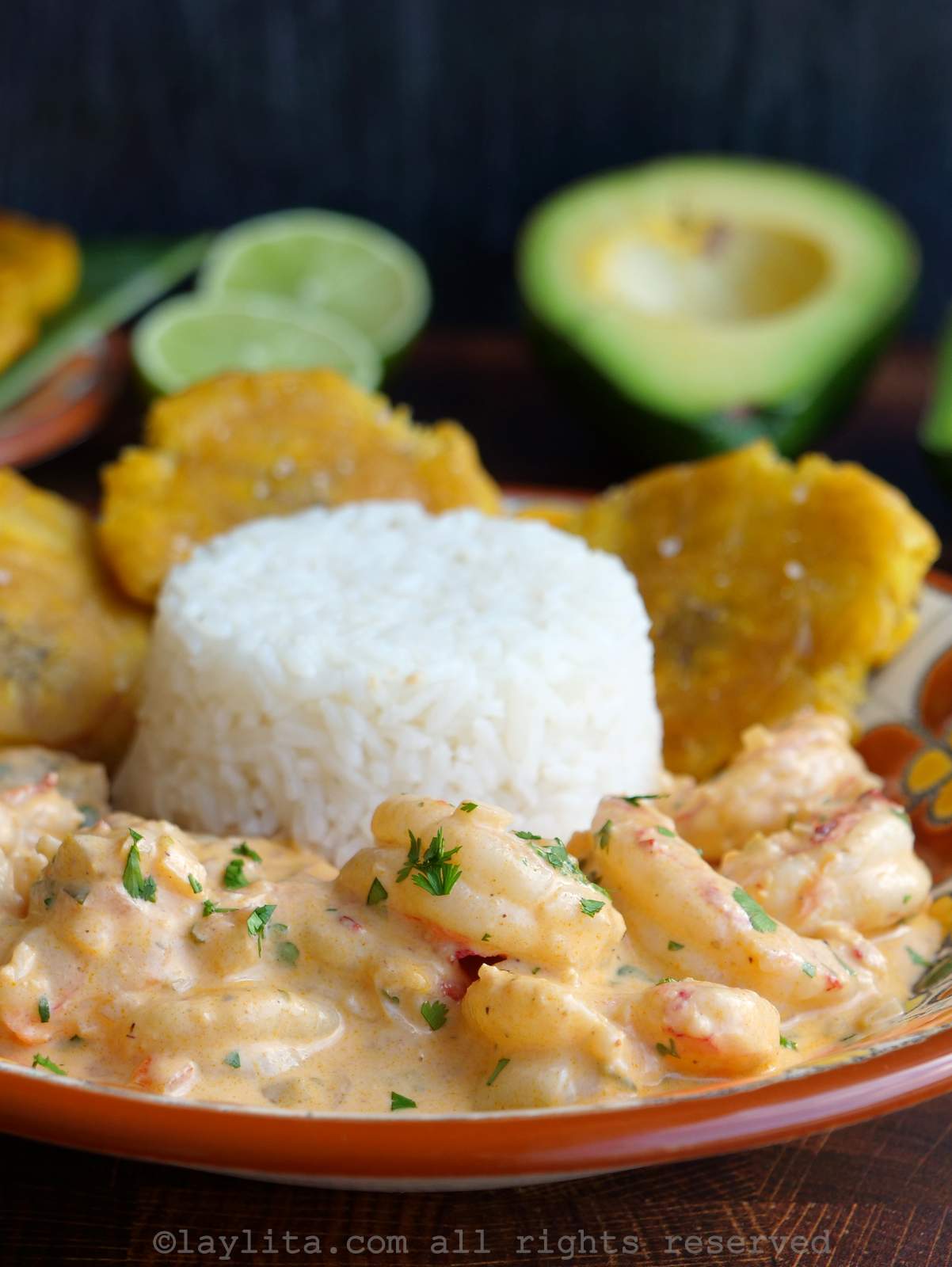
You can also find other variations of this shrimp coconut dish in other Latin American countries, including Brazil, Colombia, Venezuela, and many Central American/Caribbean countries. In Brazil it is known as moqueca, in Colombia it’s also called encocado, in others it’s called camarones en salsa de coco.
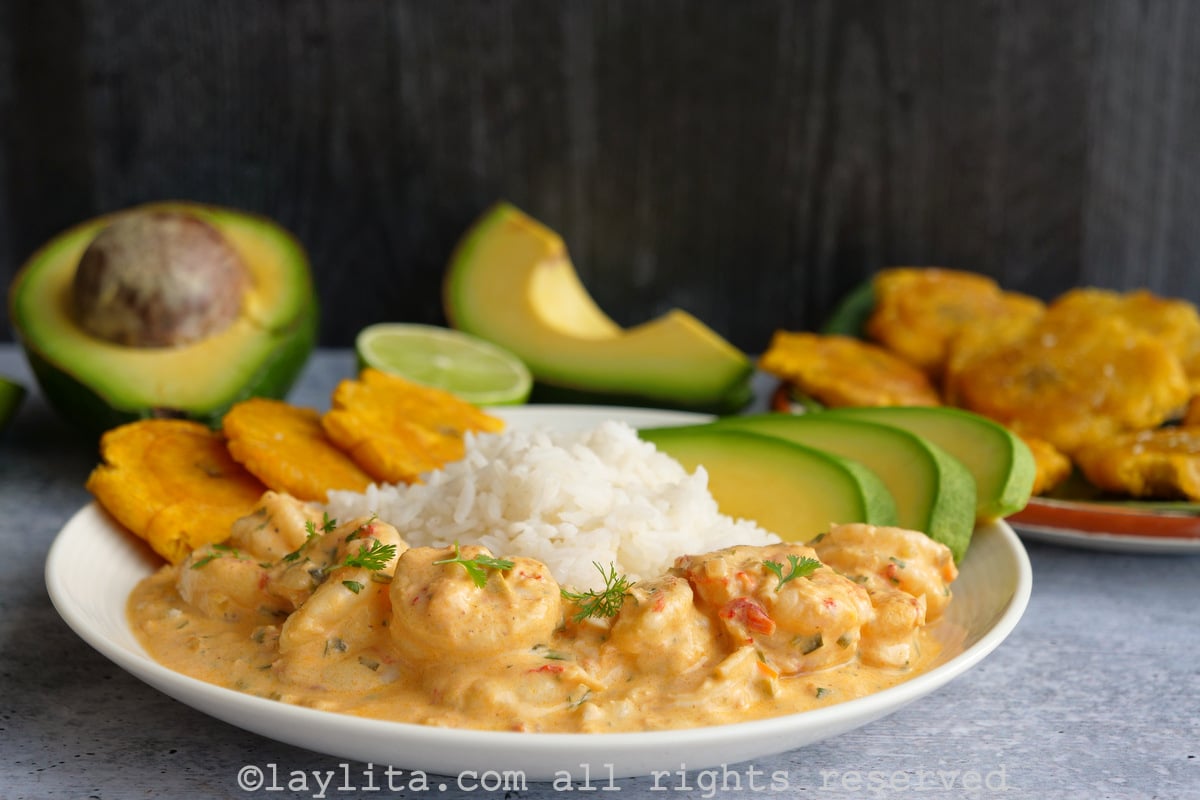
The key ingredients to prepare the best encocado shrimp with coconut sauce
Chillangua or Culantro
One of the so called “secret” ingredients for a good encocado is an herb called chillangua in Ecuador, in other Spanish speaking countries it’s also known as culantro de pozo and culantro hediondo (stinky cilantro). It’s a type of wild cilantro or wild coriander with long leaves, it has a very intense cilantro smell. One of the characteristics of this type of cilantro is that it keeps its flavor when cooked.
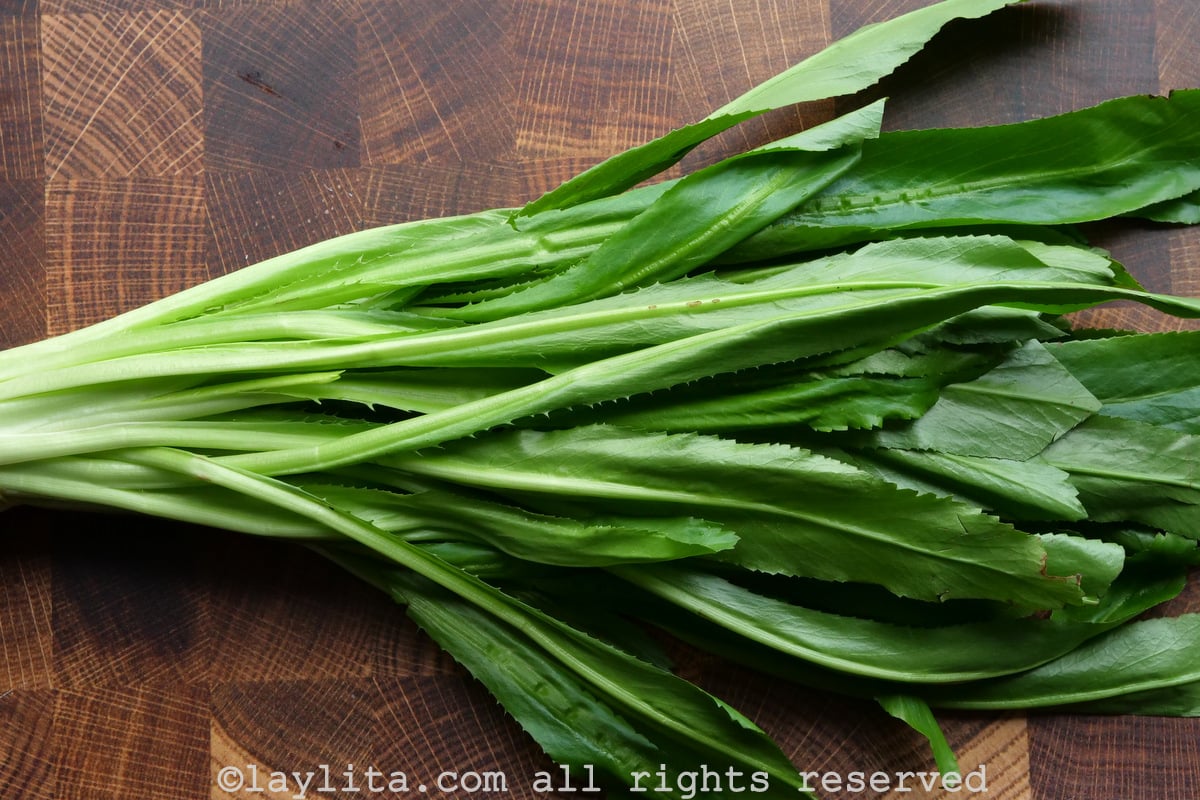
Of course, it’s been somewhat difficult for me to find chillangua outside of Ecuador, I probably only saw it once in the US at an Asian grocery store. Despite buying seeds online I wasn’t successful at getting it grown in Seattle, though I know people that are able to grow it in warmer states (Florida). I was so excited when I saw it at the grocery store here in Luxembourg. It was labeled Vietnamese coriander or Thai parsley (Ngò Gai), but I recognized it immediately. The store is called Grand Frais and they also have locations in France, Spain, and Belgium.
What is the best substitute for chillangua or culantro?
The best replacement option for chillangua is to use the regular cilantro/coriander stems. When I’m preparing an Ecuadorian recipe that calls for chillangua and it’s not available, I will use finely chopped the cilantro stems and add them to the refrito or sofrito instead. I’ll usually save most of the chopped cilantro leaves to add once the dish is finished cooking, because it adds that touch of freshness.
Achiote or annatto
Another ingredient that is sometimes challenging to find is achiote or annatto. It’s a red seed that is used to give a yellow/orange/red color to many Latin American recipes. The achiote flavor is very subtle and almost unnoticeable in most dishes (there are few exceptions). You can find it in the seed form, in powder (ground up seeds), in a paste, infused in oil, or in lard (manteca).
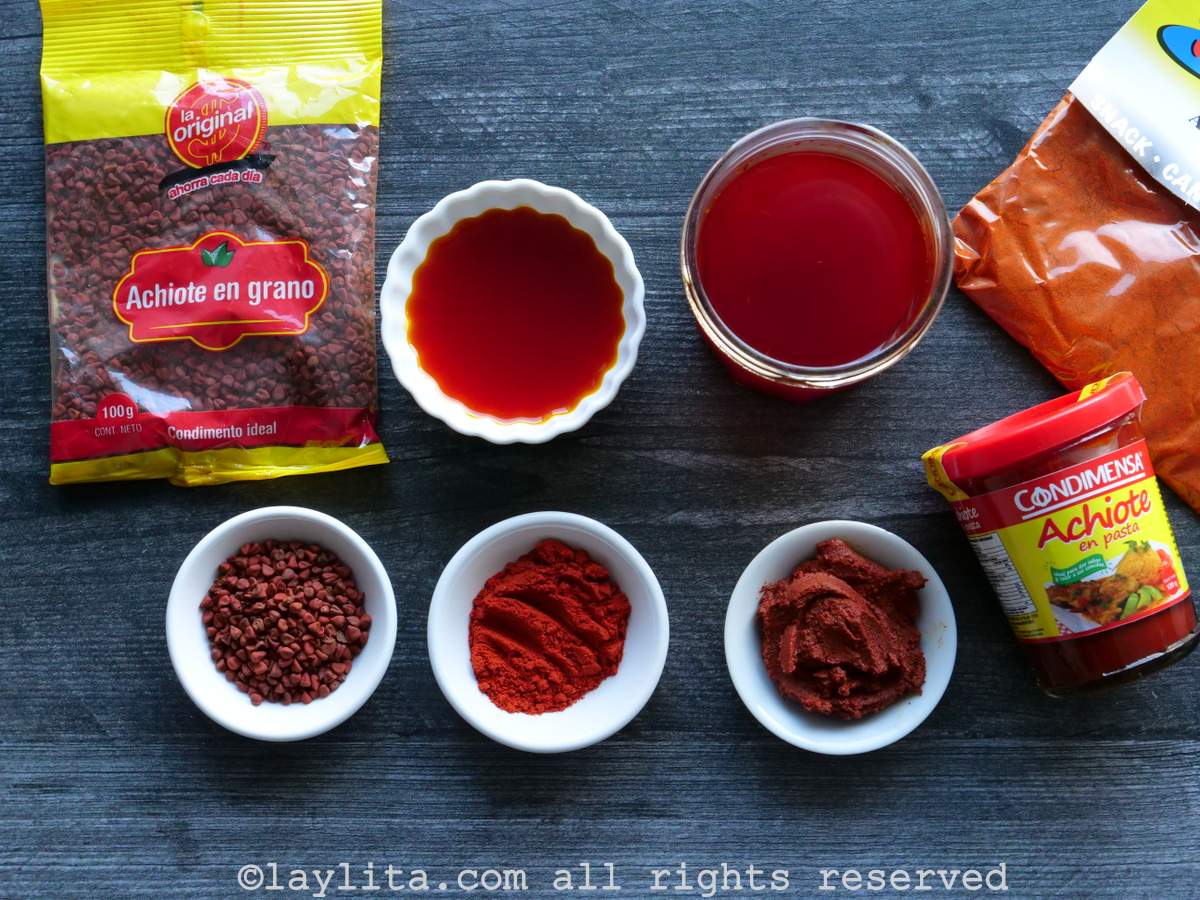
In the US, most of the time I would buy it in powder at the Latin grocery stores or even at the regular supermarket. The flavor is the most noticeable is powder because it’s the seeds ground up. In Europe, I have a hard time finding it in powder, and it’s more likely to be in paste or just the seeds. The annatto paste, depending on the brand, sometimes has added ingredients such as other spices (cumin, etc).
How to make achiote oil using the seeds
To use the seeds, heat the amount of oil you need for the recipe over low heat, for example 1-2 tablespoons for this recipe, then add about 1-2 tsp of seeds and let them simmer until they release their color, and the oil turns yellow/orange. Then use a slotted spoon to remove the seeds. I usually make ½ cup of achiote oil and it lasts me for a few weeks (I keep it refrigerated), I add to recipes as I need it.

The best replacement for achiote or annatto is paprika, but the sweet paprika. The smoked or spicy paprika versions are not the best replacement because those flavors are not at all similar to achiote. Same goes for turmeric or curry powder, it will change the flavor of the dish and even the color is not the right tone, so please don’t use turmeric to replace achiote. Another option is to use a bit of tomato paste – if it’s for a recipe that uses tomato. Also, you can just omit the achiote when the amount used is minimal and it doesn’t impact the overall flavor; especially if you don’t care about the dish looking exactly like the traditional version.
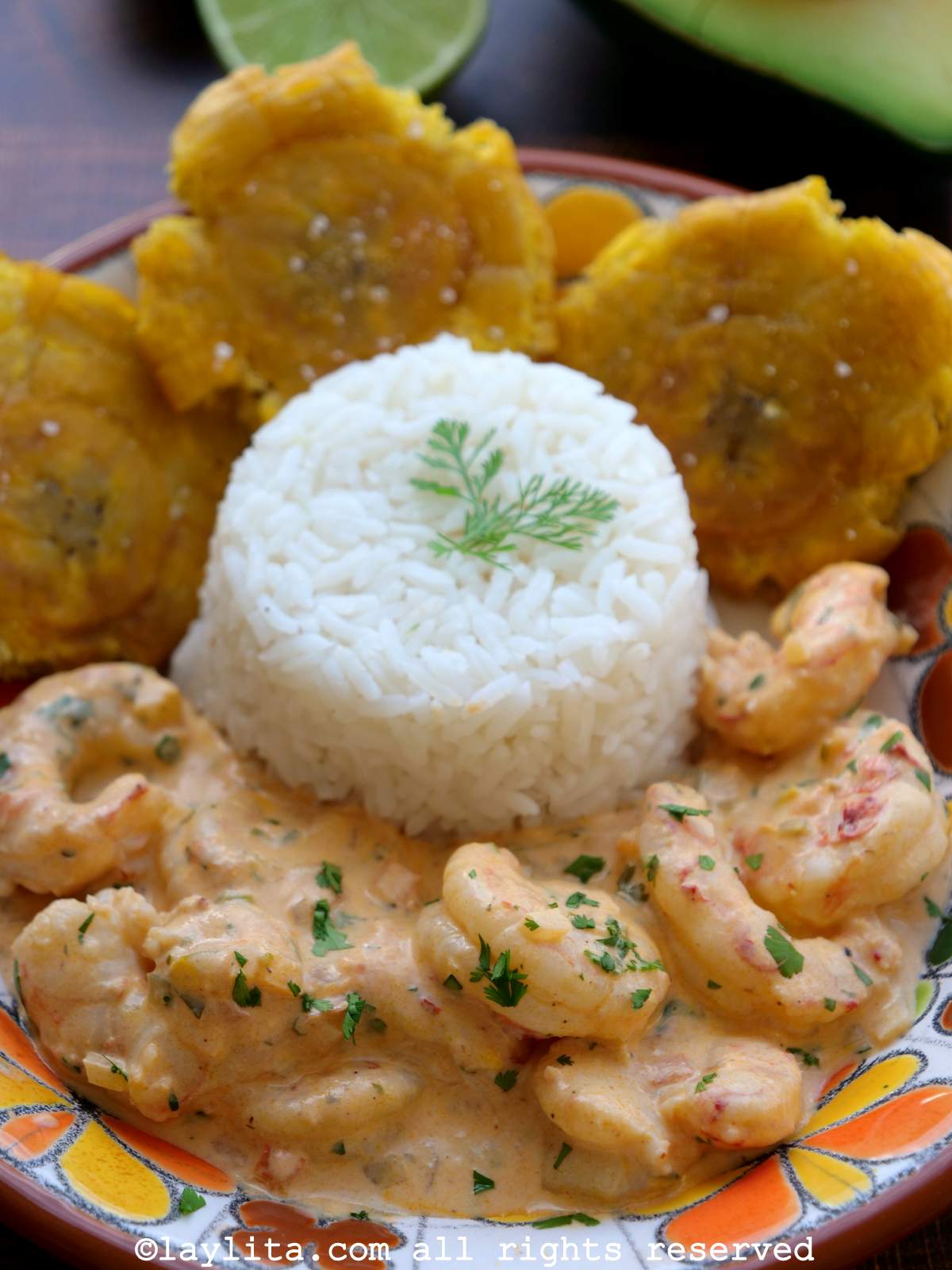
Canned coconut milk or coconut cream vs homemade
In Ecuador, it used to be that most beach restaurants would knock down a coconut from the nearest tree to make this dish. Some still do, but the availability of canned coconut milk has made it more convenient to use that at home.

I’ve tried several times to use store-bought coconuts and make homemade coconut milk for this recipe. Unfortunately (unless I’m in Ecuador), it’s just not as good as the canned ones. However, I do like adding some fresh grated coconut to give the dish some extra fresh coconut taste. But if you live in a country where coconuts don’t grow, just use canned coconut milk. If you have access to good quality fresh coconuts, then definitely try making your own. It’s a very simple process: just blend the fresh coconut meat/chunks with water, and strain it.
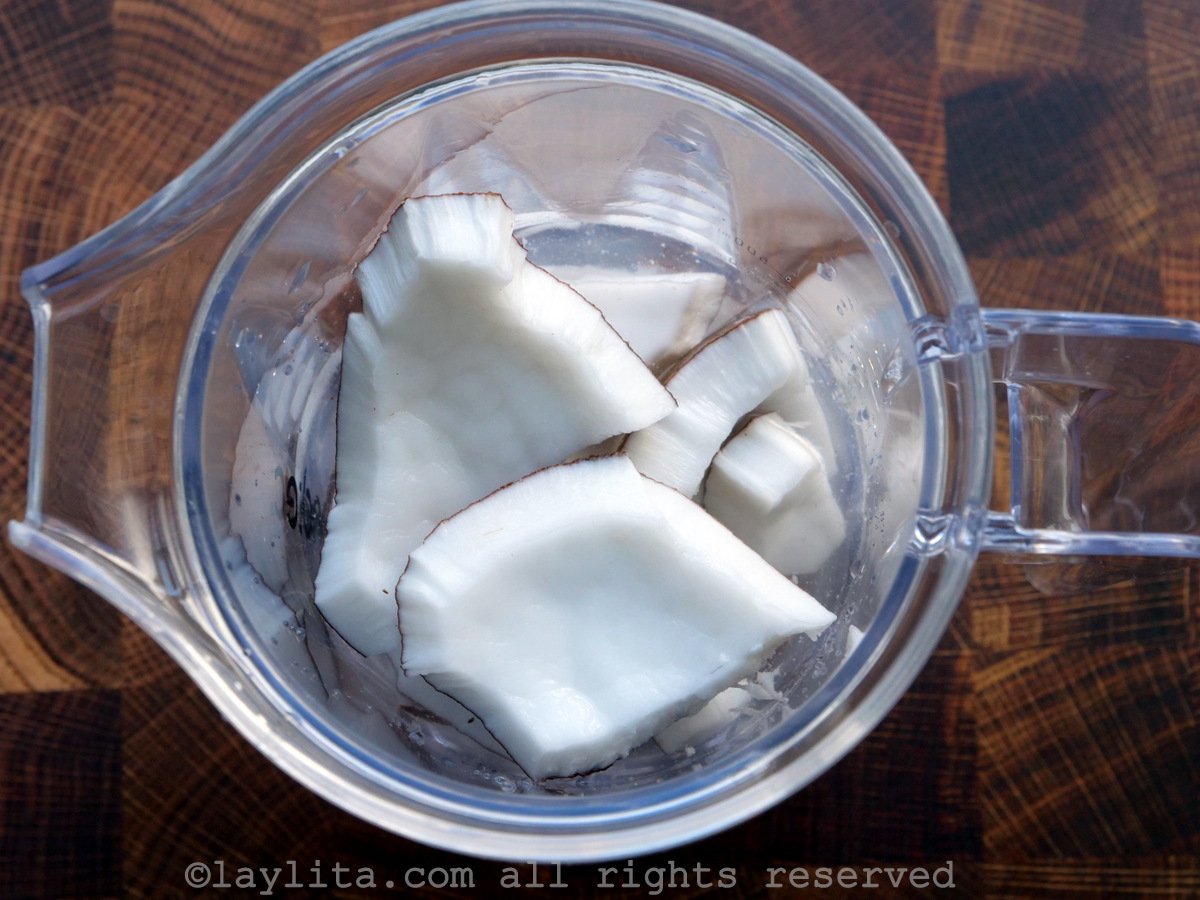
You can use either coconut milk or coconut cream for this recipe, just make sure neither are sweetened. Some types of coconut cream are used more for cocktails and have sugar added. The difference between coconut milk and coconut cream is the fat content (same as with regular milk and cream), so use whichever one you prefer. If you can only find coconut cream, you can dilute it with additional water (or seafood broth) to lower the fat content (if you want).
The refrito or sofrito
You might have heard of sofrito, in Ecuador we call it refrito. It’s essentially the flavor base for a dish. You heat oil (with achiote) and sauté onions, garlic, bell pepper, tomato with other herbs/spices/condiments. It releases their flavor and sets the tone for the dish. Most dishes from stews to soups usually start with a good refrito. For the refrito for this shrimp encocado, I kept it simple and didn’t add a lot of extra spices/condiments because I wanted the main flavors to be the coconut and the shrimp. However, if you want to add more spices and herbs (cumin, oregano, etc) then go for it.
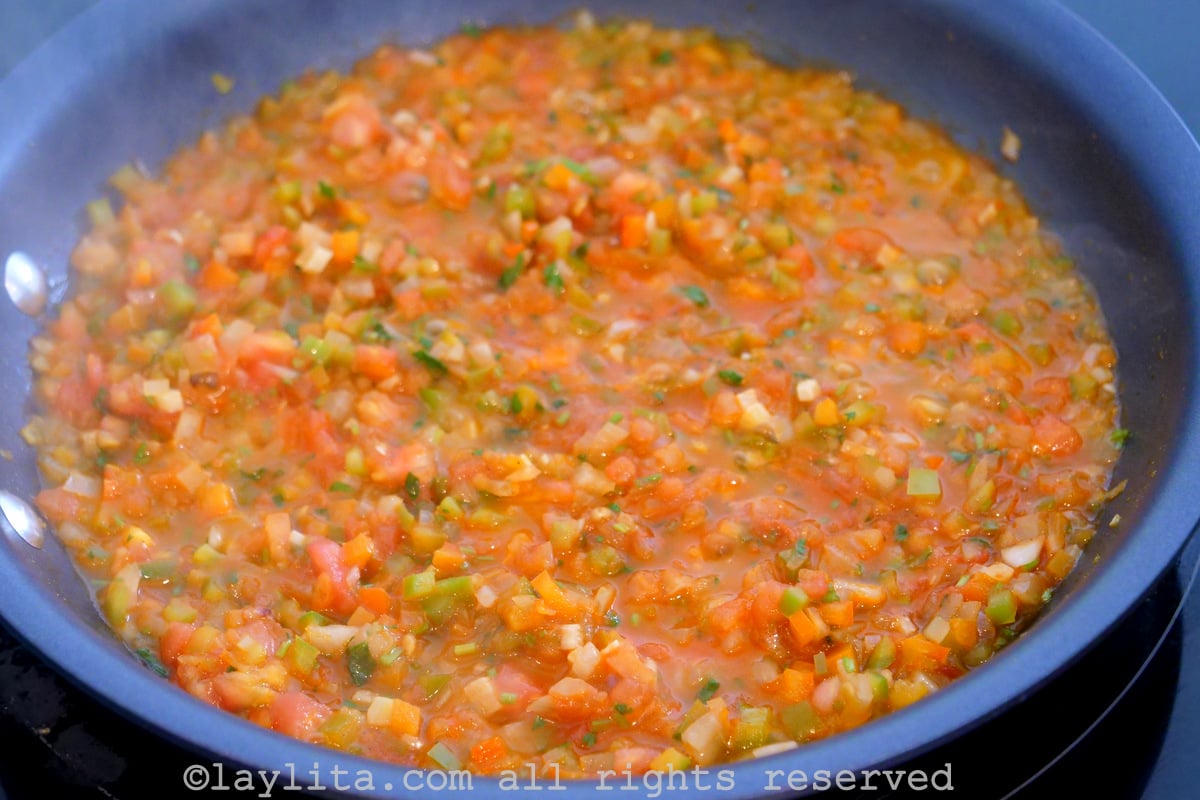
This shrimp in coconut sauce, like most Ecuadorian dishes, is not meant to be a spicy dish. In Ecuador, we usually serve a spicy aji sauce on the side, but keep the actual dish non-spicy. This allows each person to add and adjust the amount of hot spiciness to their personal preference. But, of course, if you and everyone that you are preparing this dish for, have preference for spicy flavors, then feel free to add diced hot peppers or chili powder to the refrito.
Shrimp (Camarones, prawns, langoustines)
You can use small prawn, medium, or large shrimp, any option works. You can also use langoustines (i.e., big shrimp with the heads on). I like to use peeled shrimp, but if you prefer the extra flavor you get from using shrimp with the peel on, then go for it. Ecuador is a big shrimp exporter, so whenever I see Ecuadorian shrimp at my local supermarket, I usually end up buying them.
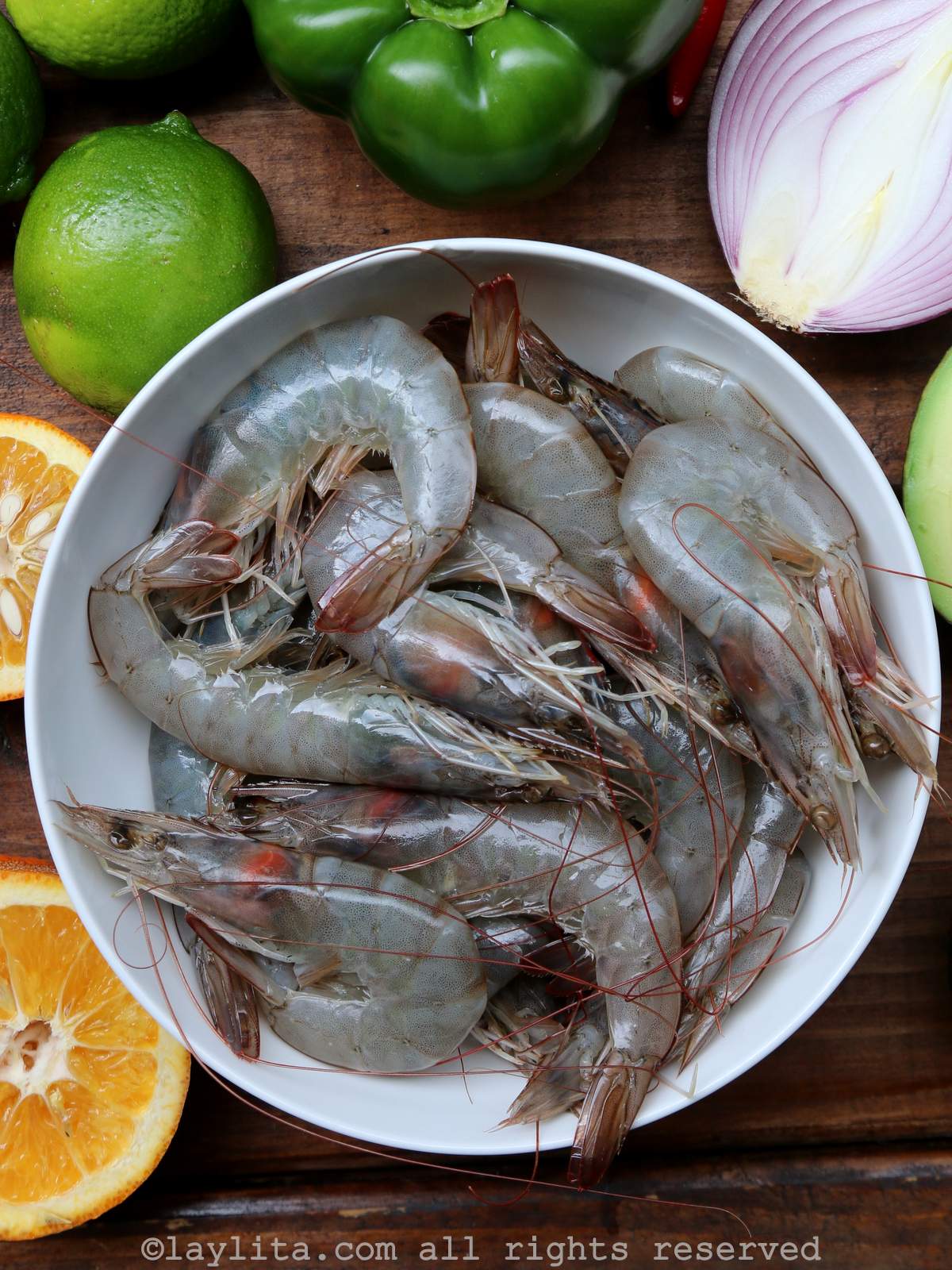
I must confess that I have also fallen in love with those wild Argentinean red shrimp—they are so delicious! In the US, I would find them frozen at Trader Joe’s and Costco. In Europe, they are also easy to find in the frozen section at most big supermarkets (Auchan, Carrefour, Cactus). They almost look like they’re already cooked, but they’re actually raw (see photo below). I also keep a pack of frozen uncooked shrimp in my freezer. It’s an easy option for those unexpected times when I need to prepare a quick last-minute recipe.
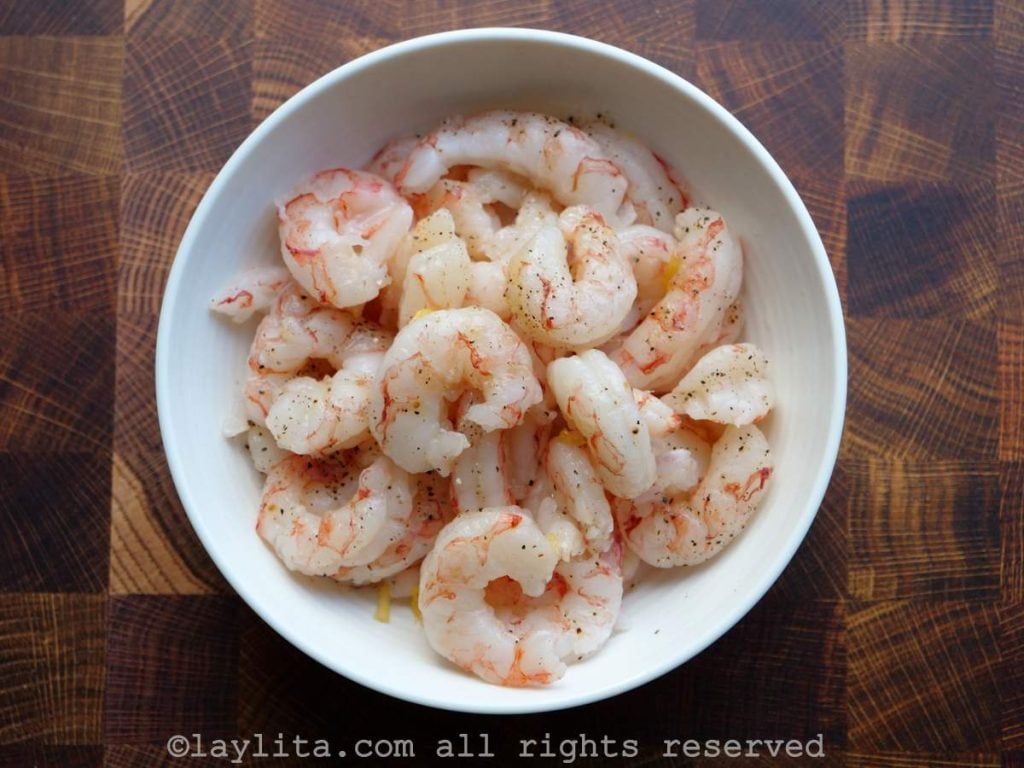
Recommended side dishes to serve with shrimp in coconut sauce or encocado de camaron
- Rice: Most Ecuadorian and Latin dishes are served with white rice, and this shrimp recipe is no exception. Rice is the best vehicle to soak up all that yummy shrimp coconut sauce
- A small side salad or tomato and onion curtido salsa: This adds some acidity and freshness to contrast with the rich flavor of the shrimp and coconut sauce.
- Avocado slices: In case you haven’t noticed, in Ecuador we love to serve avocado as a side for most traditional dishes.
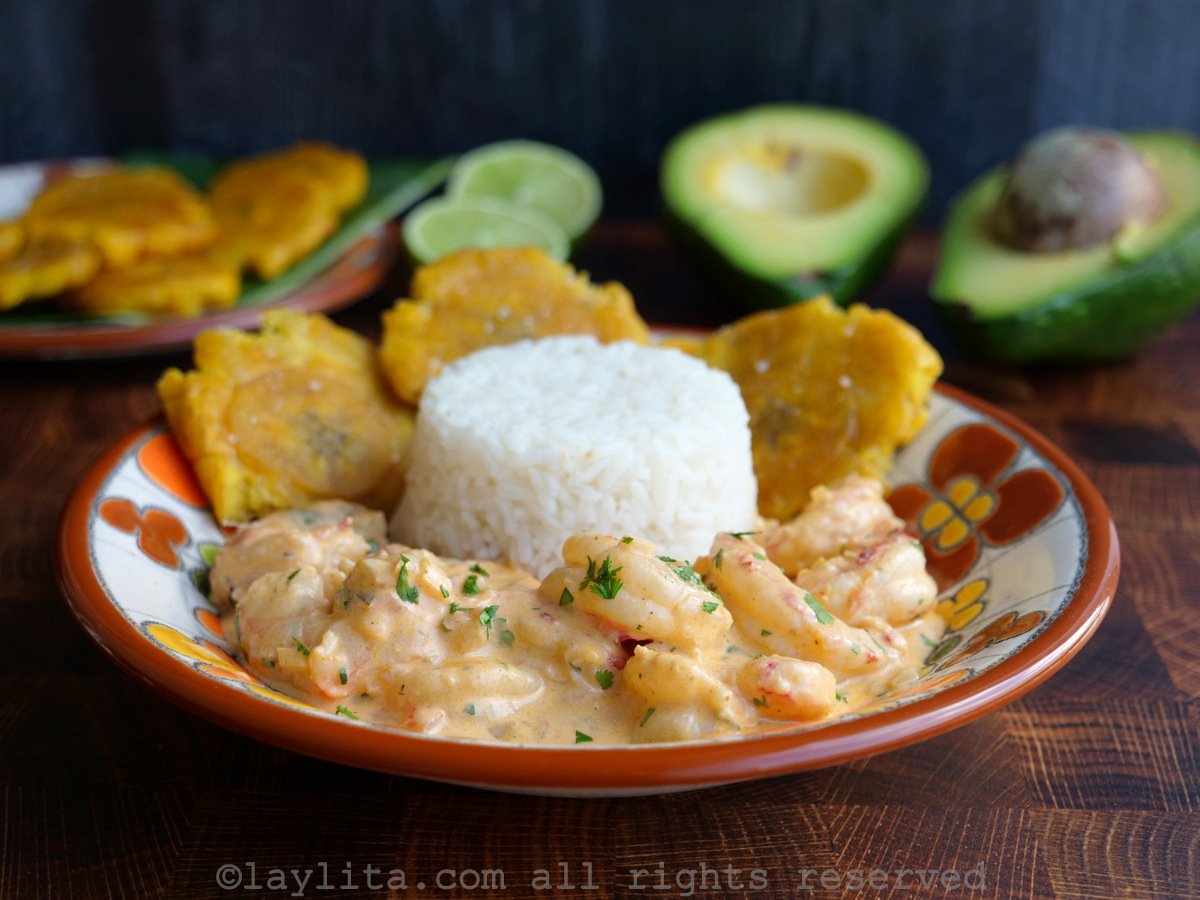
- Salsa de aji or fresh spicy salsa: As mentioned before, this dish is not meant to be prepared as a spicy dish, but you will always find a spicy aji sauce served on the side for those who wish to add it to their individual plate. If you are at restaurant in Ecuador and it’s not there, just ask for “aji casero por favor” or “aji de la casa”.
- Extra slices of lime
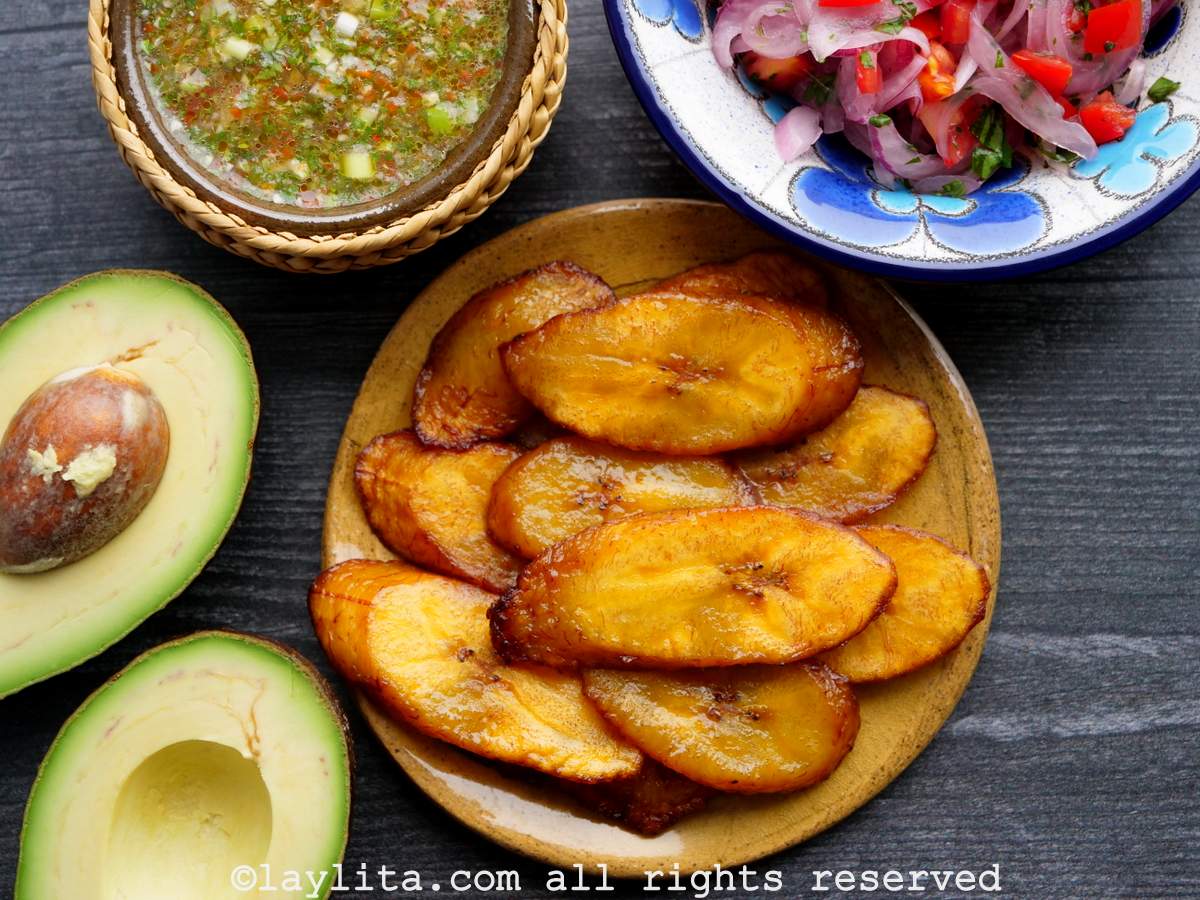
- Plantains: Any form of plantains is a must-have side dish for this shrimp in coconut sauce. The favorite are patacones, also known as tostones, or double fried thick green plantain chips. Another plantain option are maduros fritos or sweet ripe fried plantains. You can also serve it with a healthier alternative of boiled ripe or green plantains.
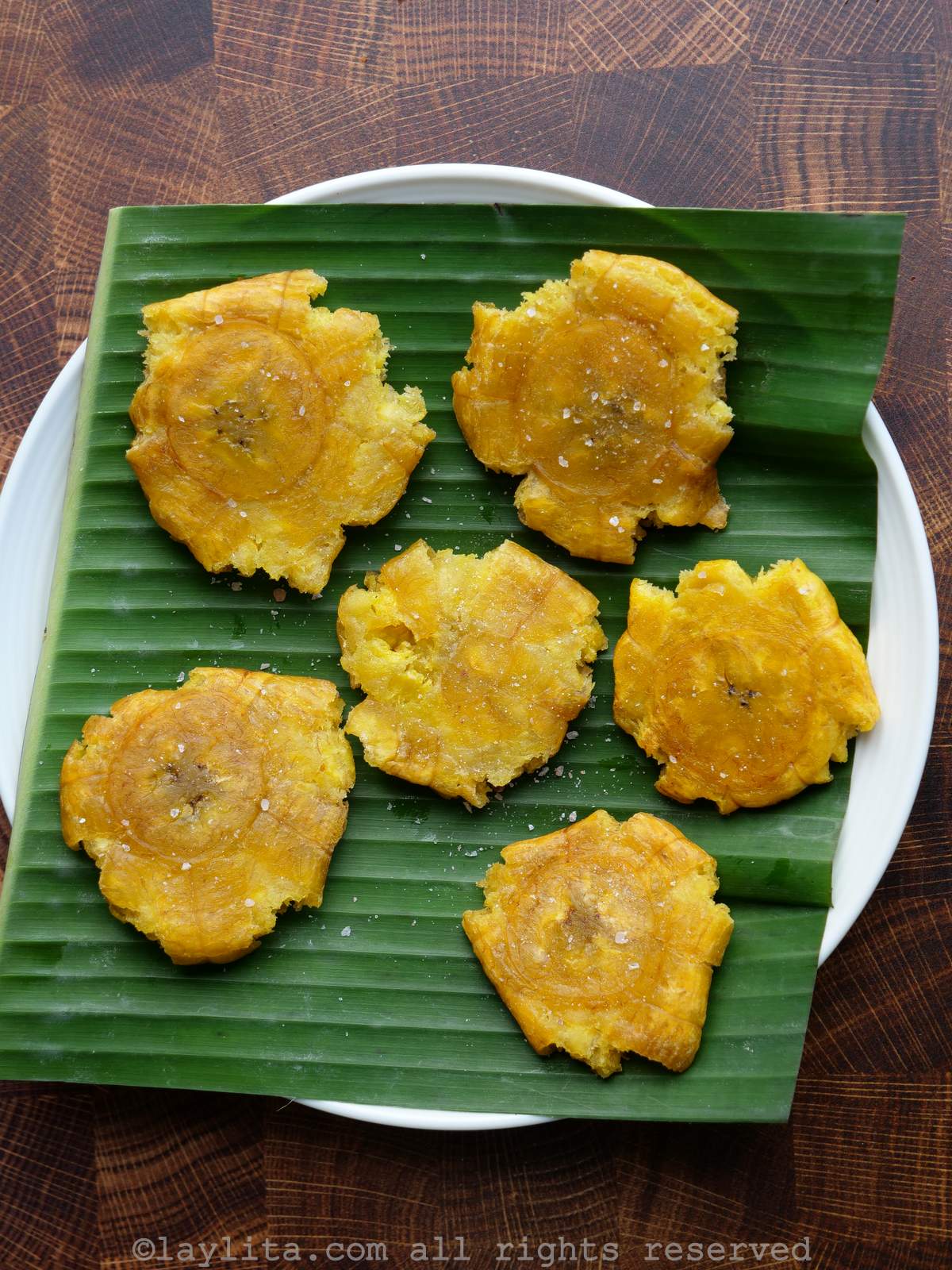
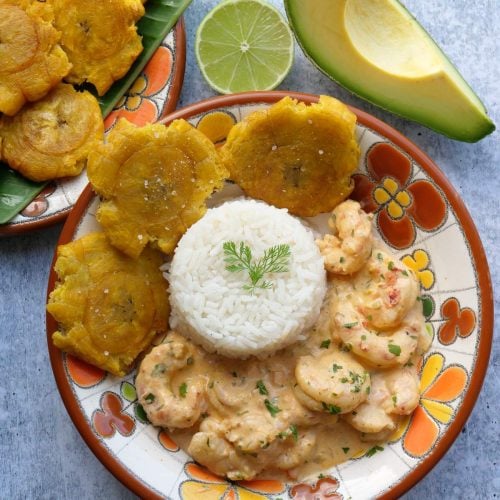
Shrimp in coconut sauce (Encocado de camaron)
Ingredients
- 500 gr shrimp, peeled and deveined 500 grams= a litle more than a 1 lb
- Juice of ½ orange
- Salt and pepper
For the refrito or sofrito base:
- 2 tbs oil regular cooking oil or achiote oil
- ½ red or pink onion, finely diced can also use the white parts of greenonions/scallions
- 2 garlic cloves finely diced or minced
- 1 bell pepper, finely diced you can use green bell pepper or a red bell pepper, or a mix of both
- ½ teaspoon achiote powder or 1 teaspoon achiote paste – if not using achiote oil add more or less based on your taste preference – use 1 tsp of sweet non-smoked paprika as a replacement
- 1 large bunch of cilantro – separate the stems and the leaves, finely chopped 1 large bunch = ~50 grams
- 1 large tomato or 2 small ones, peeled and finely diced or grated ~300 grams
- 1 can 14 fl oz of unsweetened coconut cream or coconut milk ~14 fl oz=~400ml
- 1 tsp of tapioca starch or corn starch optional
- 2-4 tbs of fresh grated coconut optional but recommended
- Juice from ½ to 1 lime – to add at the end
- Salt and pepper to taste
Recommended side dishes:
Instructions
- Chop and dice all the vegetables and herbs. Have all the ingredients for the recipe prepped and ready to go.
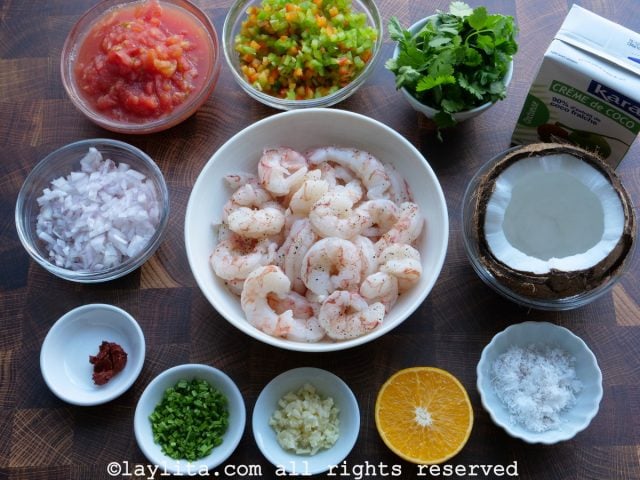
- Place the raw shrimp in a bowl and sprinkle them with salt, pepper, and juice from ½ orange. This is a quick marinade while you prepare the refrito and the coconut sauce. Don’t let it marinate for more than 15 minutes.

- Heat the oil over medium heat in large skillet or sauté pan. Add the diced garlic, diced onion, diced bell pepper, and achiote paste or powder (if not using achiote oil). Cook until the onions are soft, about 3-5 minutes.

- Next add the diced tomatoes, all the chopped cilantro stems, half of the chopped cilantro leaves (save the rest to add at the end), and salt. Cook for about 5 minutes on medium heat.
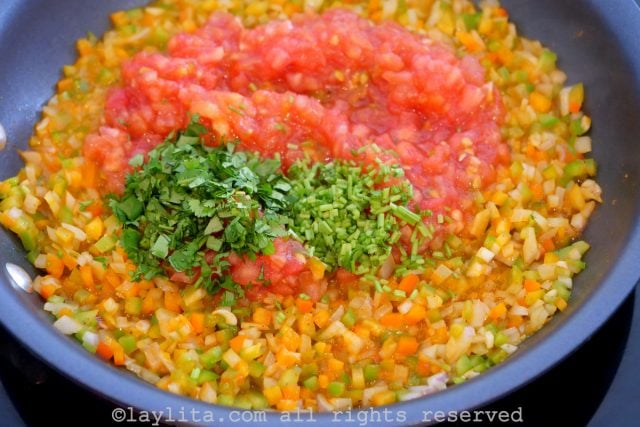
- Add the coconut milk or coconut cream to the refrito, mix it well, and cook for about 5 minutes. If you are using coconut milk instead of coconut cream but prefer a thicker sauce you can thicken the sauce by adding 1 tsp of tapioca starch or corn starch.
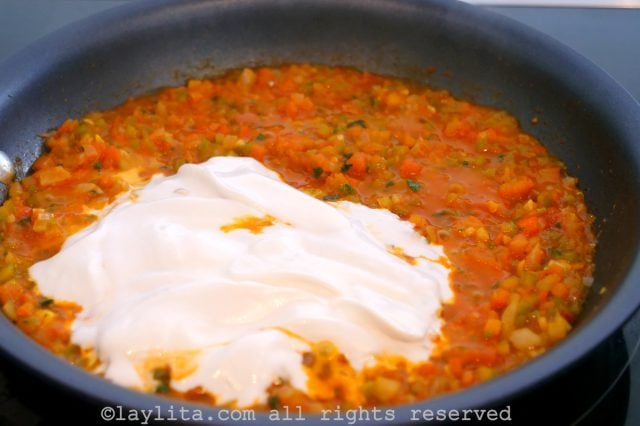
- Add the shrimp and mix well. Turn the heat down to the lowest setting. Cover and let the shrimp poach in the coconut sauce for about 5-10 minutes, stir occasionally.

- Add the fresh grated coconut (optional but recommended) and lime juice once the shrimp is cooked. Taste and add additional salt/pepper if needed.
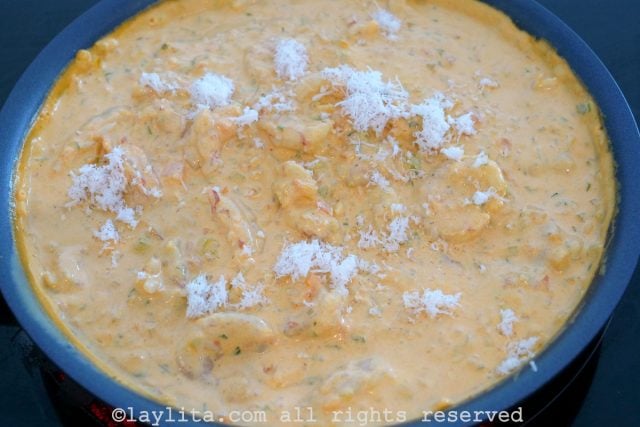
- Stir in the remaining chopped cilantro leaves.
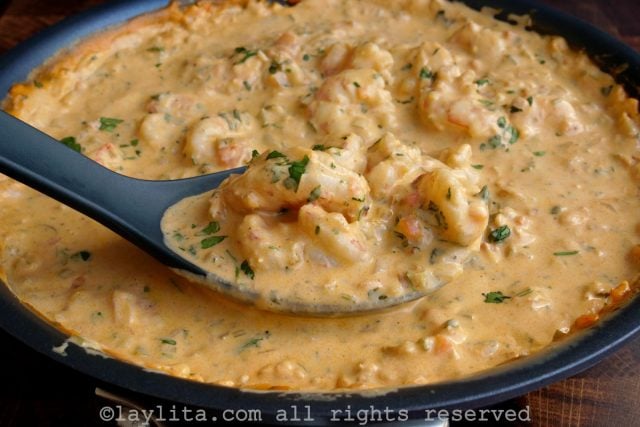
- Serve immediately with rice, lime slices, avocado and fried plantains.
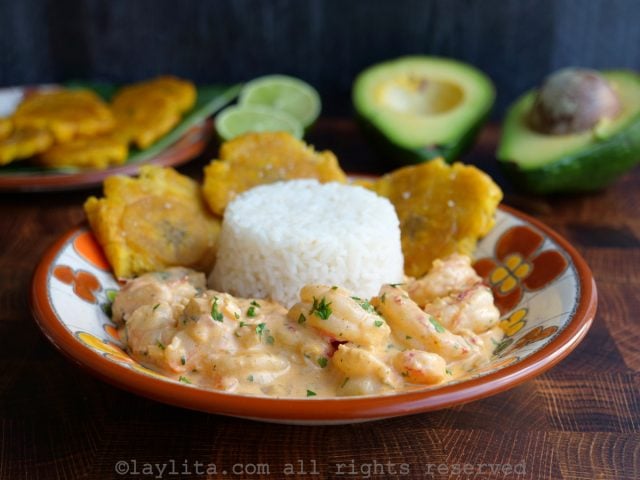

Step-by-step preparation photos for Ecuadorian shrimp in coconut sauce or encocado de camaron:
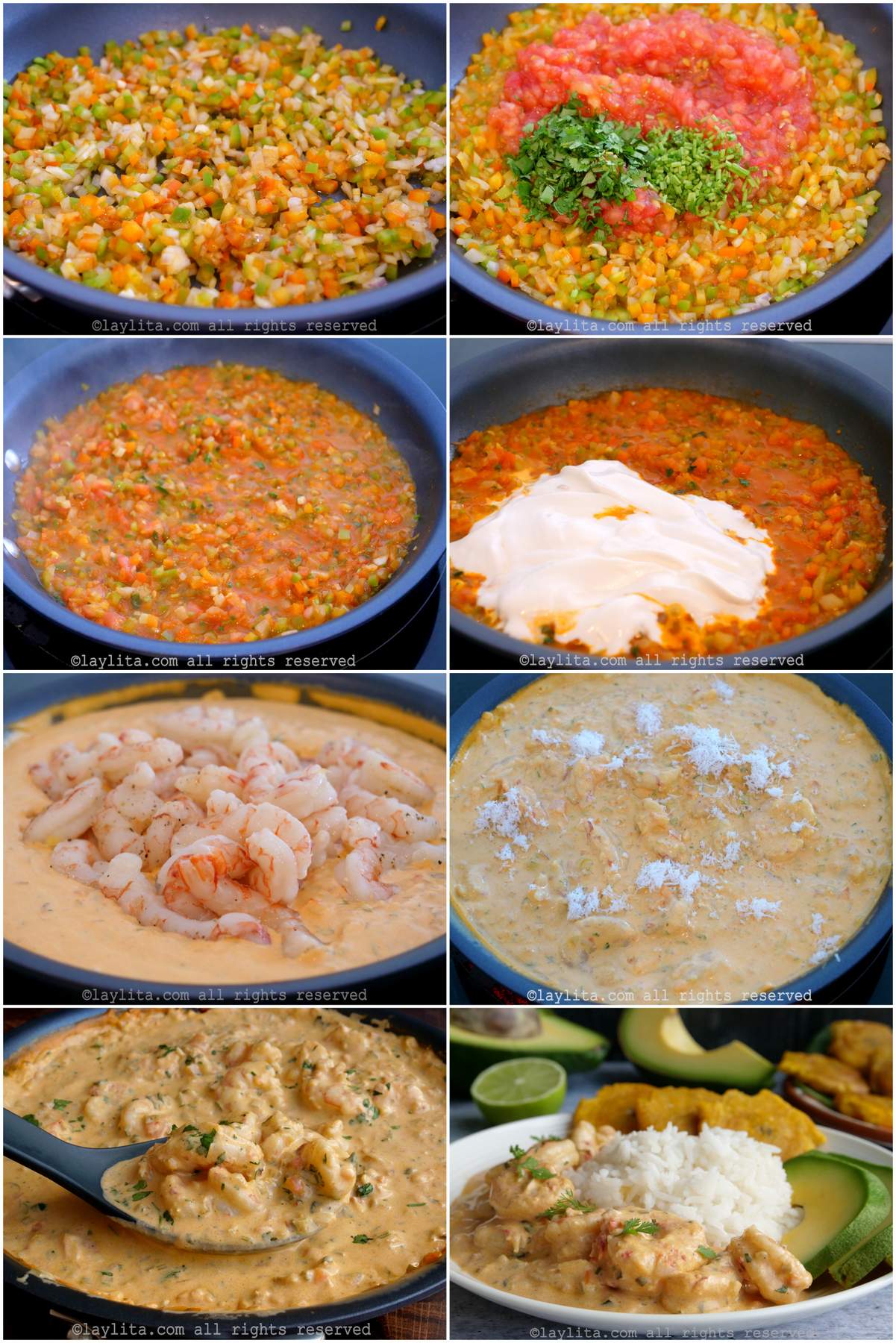
Additional Ecuadorian recipes to try:
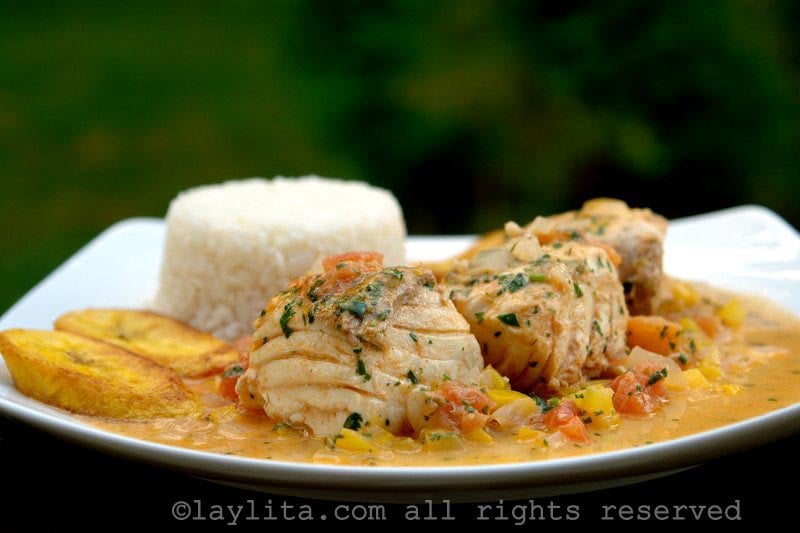
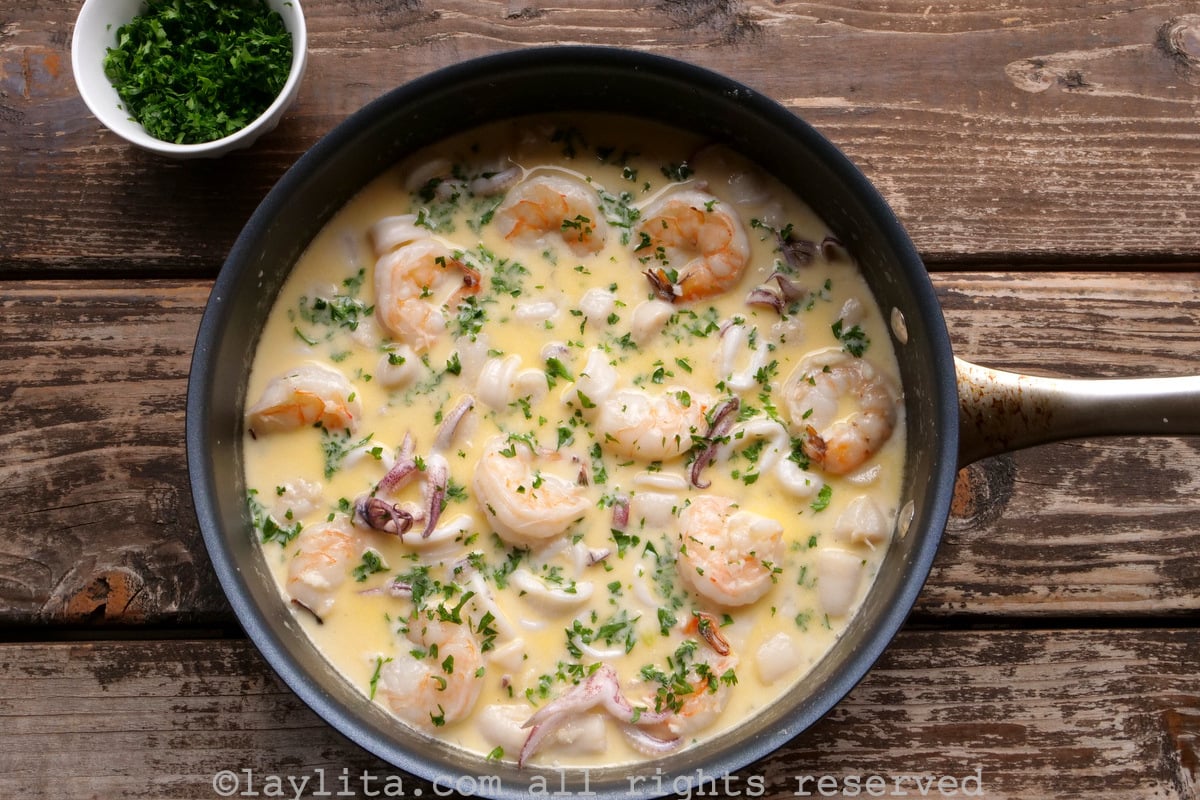
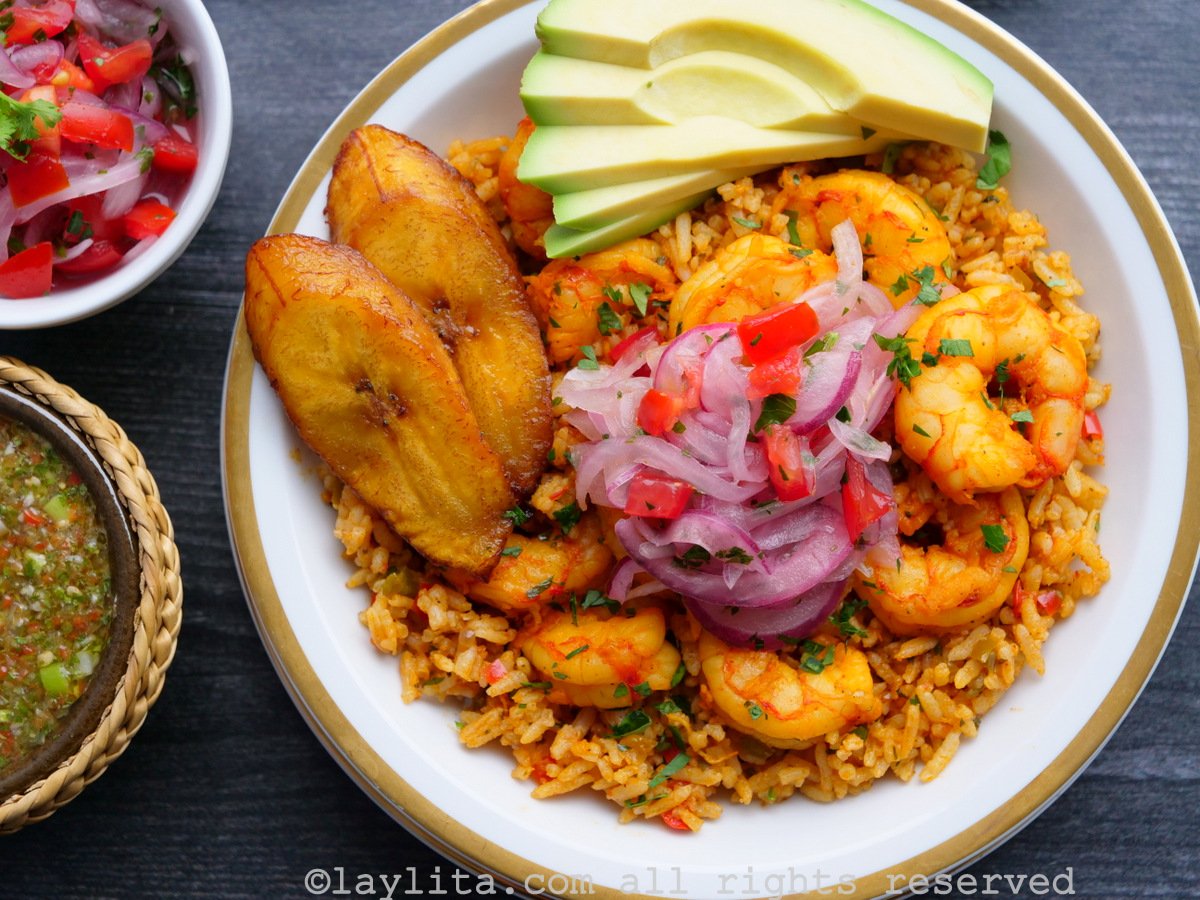
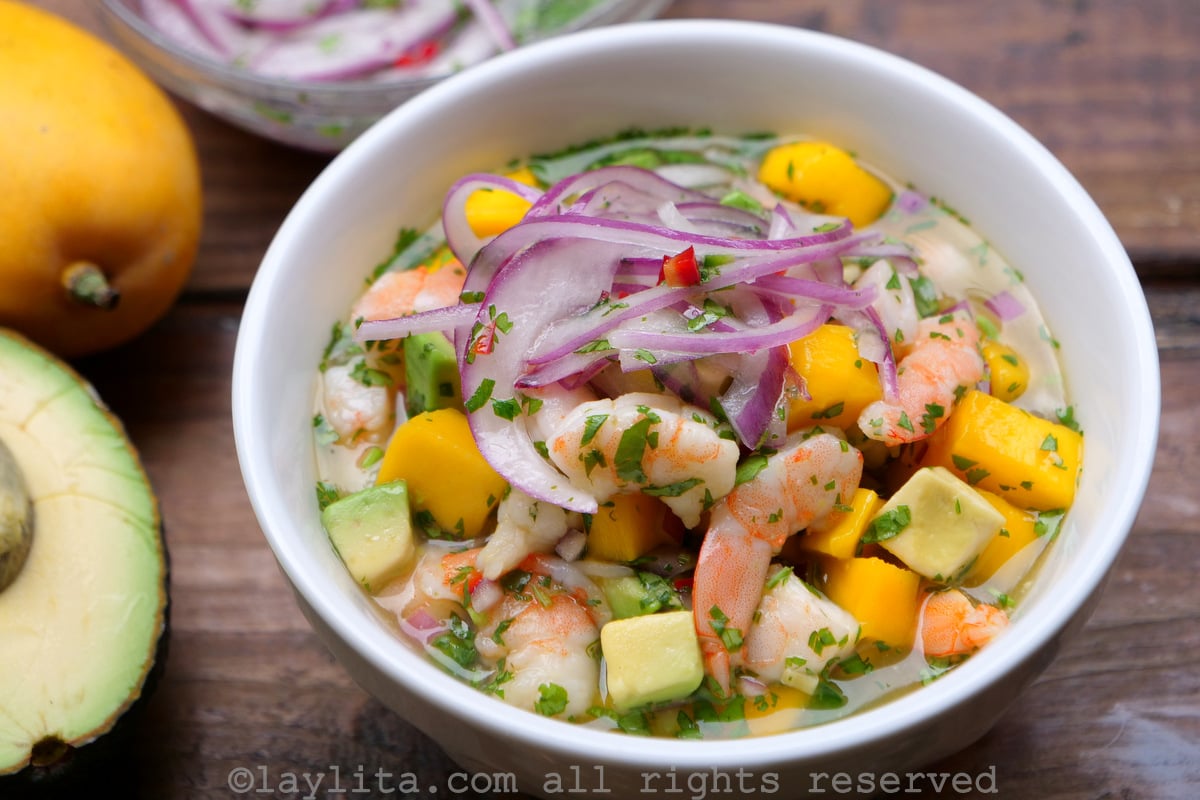
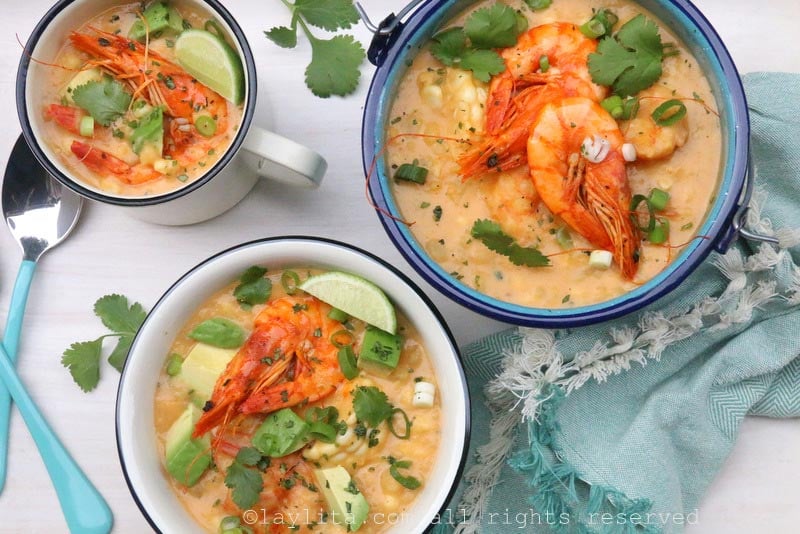
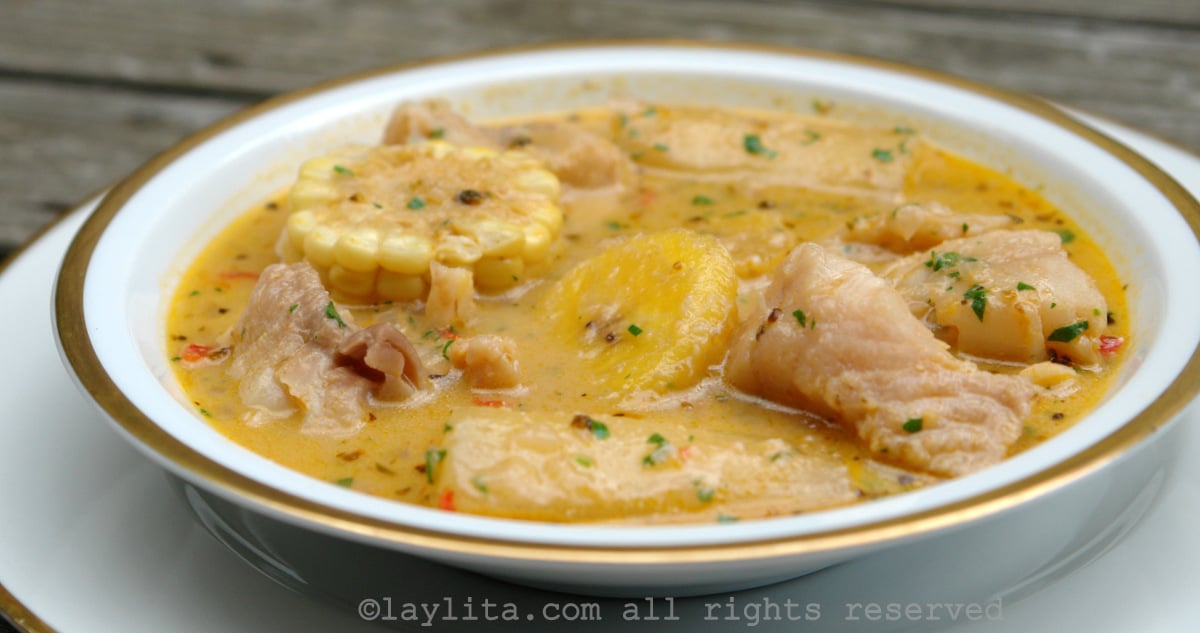
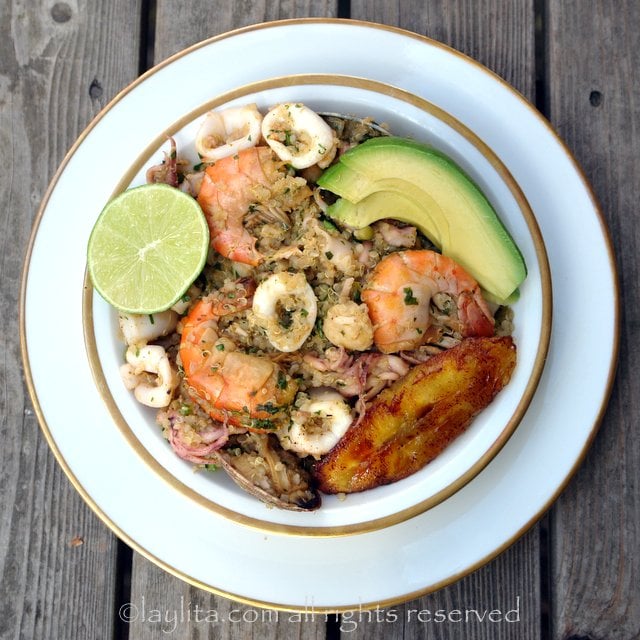
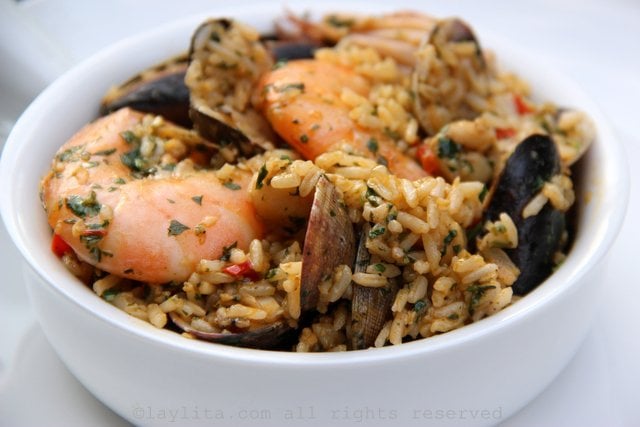

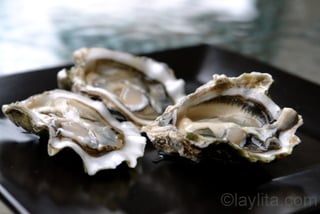
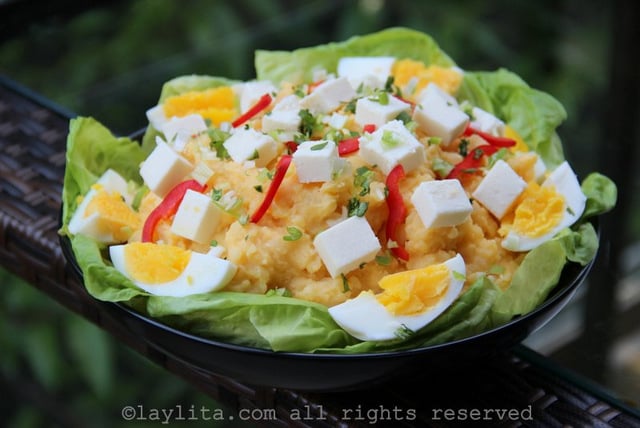
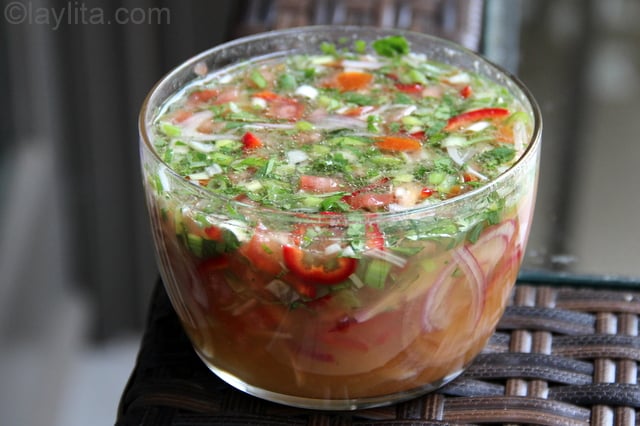
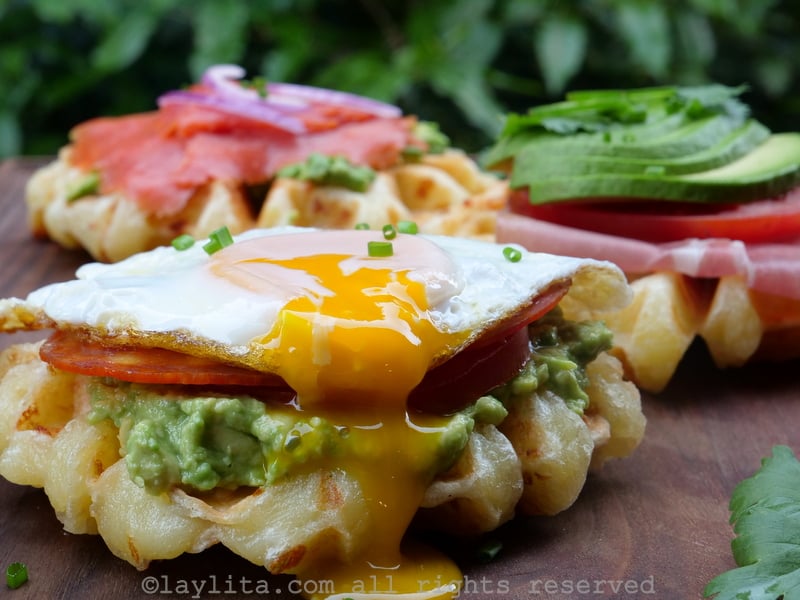
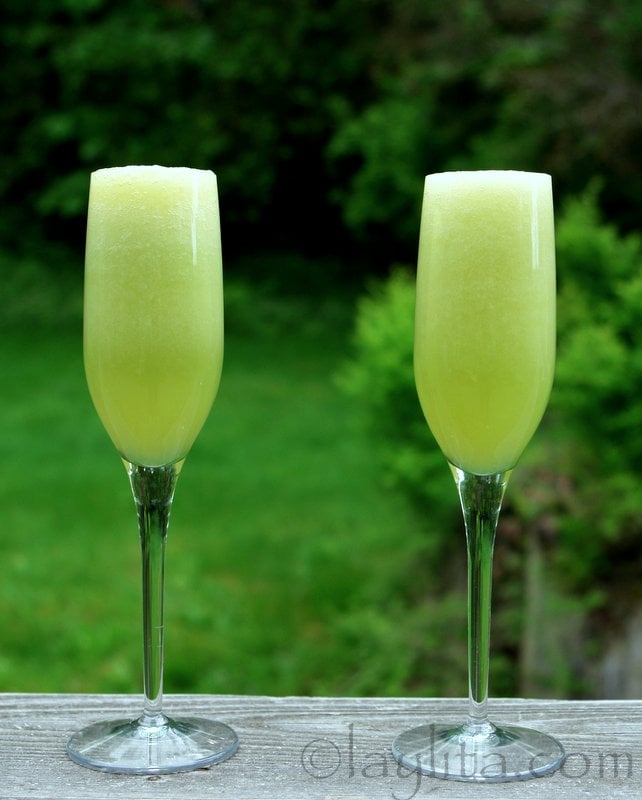
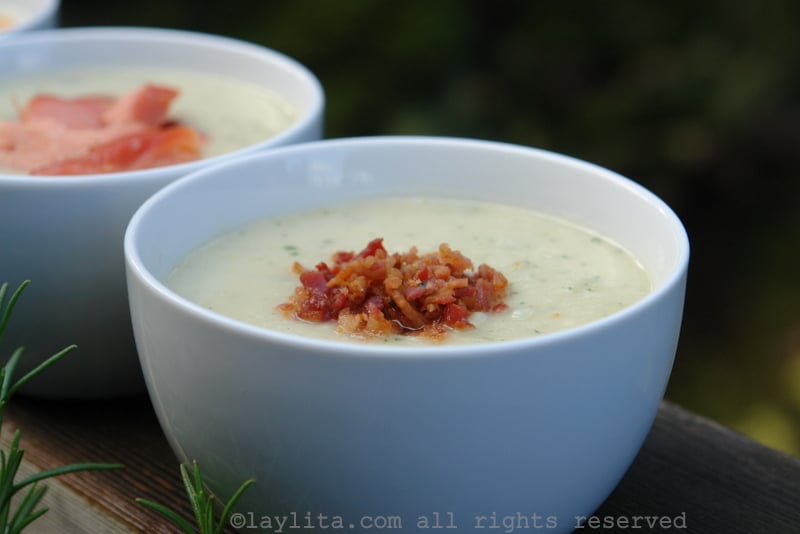
This is my favorite Ecuadorian dish!
Buenos dias cuando le veremos con un blog en Youtube.
Hola Gus, Si estoy en YouTube (aunque no he publicado nada recientemente): https://www.youtube.com/c/Laylitacom